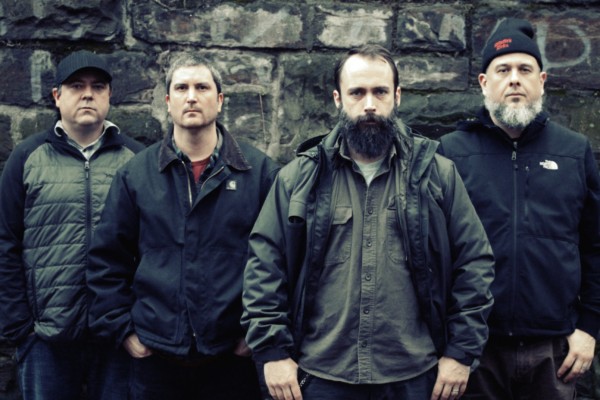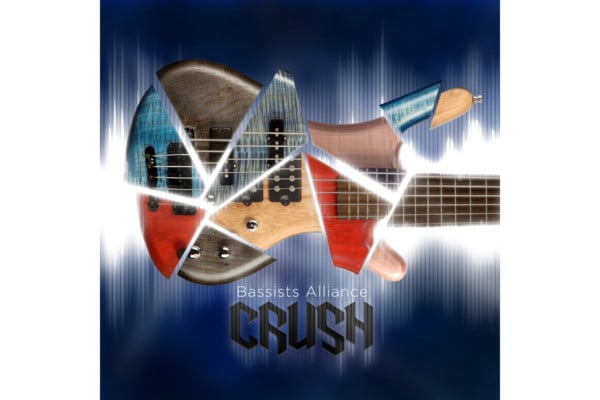Remember The Story: An Interview with Scott Reeder
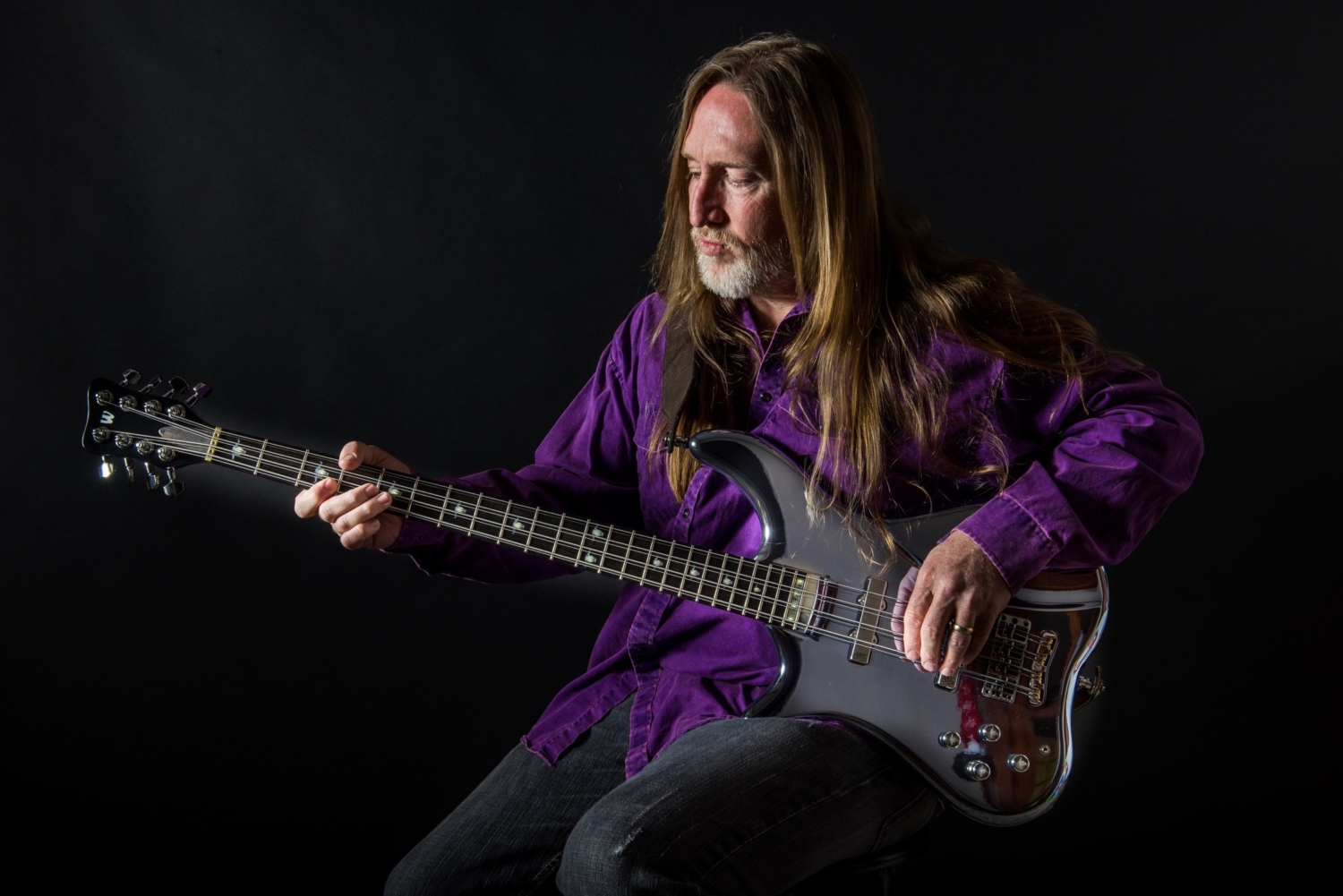
The Los Angeles-based metal outfit Fireball Ministry is back with their fifth studio album. Remember The Story, which is their first since their 2010 self-titled release, is also the first to feature the monster bass work of Scott Reeder.
Reeder was 25 when he joined the recently reformed The Obsessed, with whom he recorded two albums. In 1992 he left to replace Nick Oliveri in Kyuss. His ultra heavy bass and innovative playing (thanks in part to his lefty upside-down style) left a stamp on heavy music, specifically on the classic album Welcome to Sky Valley. After the band broke up in 1995, Reeder had a brief stint in Tool before working on several projects ranging from Sun and Sail Club to Red Dragon Cartel. He has his own studio space and has worked as the producer on several albums.
We caught up with Reeder to get the scoop on the new Fireball Ministry album, his gear, and his recording lair.
This is your first album with Fireball Ministry. Is that a big milestone for you?
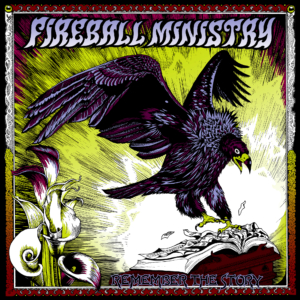 Yeah. We’ve done a couple of recordings over the years for compilations and stuff, but this is the first full-length. It always feels good to put out a full-length; every one is a milestone. I’m not that prolific, so it’s been a while since I’ve been in a band that put out a full-length album. I’ve got the Sun & Sail stuff I did a few years ago, but that was kind of a side thing and we didn’t play out very much. This feels like the real deal. My band! [laughs]
Yeah. We’ve done a couple of recordings over the years for compilations and stuff, but this is the first full-length. It always feels good to put out a full-length; every one is a milestone. I’m not that prolific, so it’s been a while since I’ve been in a band that put out a full-length album. I’ve got the Sun & Sail stuff I did a few years ago, but that was kind of a side thing and we didn’t play out very much. This feels like the real deal. My band! [laughs]
How did you get into the band?
Well, I’ve known them for years and we’ve played together in the past. Our singer, Jim, was co-producing the Sound City film and I was involved with that. I played on the song with Dave Grohl, Corey Taylor, and Rick Nielsen. Jim was there when they were filming and we talked a bit afterward. He called me shortly after that saying they didn’t have a bass player at the time. They were working on a recording and asked if I wanted to do it, so I said, “Hell yeah.” I’m pretty sure that song ended up on some compilation. Then they talked about maybe playing live in the future and I said, “Hell yeah.” At least a year went by before I got the call from Jim that they got invited by Motörhead to go on a cruise and play on a boat. Again, “Hell yeah.” So that was the impetus to learning a bunch of songs and doing the thing properly.
We’ve been having fun. Everyone is really busy so it’s not like we’ve been touring like crazy. Jim has got his film producer stuff. He’s working with Disney right now and he’s been doing all the Dave Grohl stuff. But we’ve been chipping away at this album for maybe a year. There’s been no rush or deadline, so we’ve been jamming on it a bit. It’s finally out and it’s so exciting to finally hold the CD. It’s awesome. It feels good.
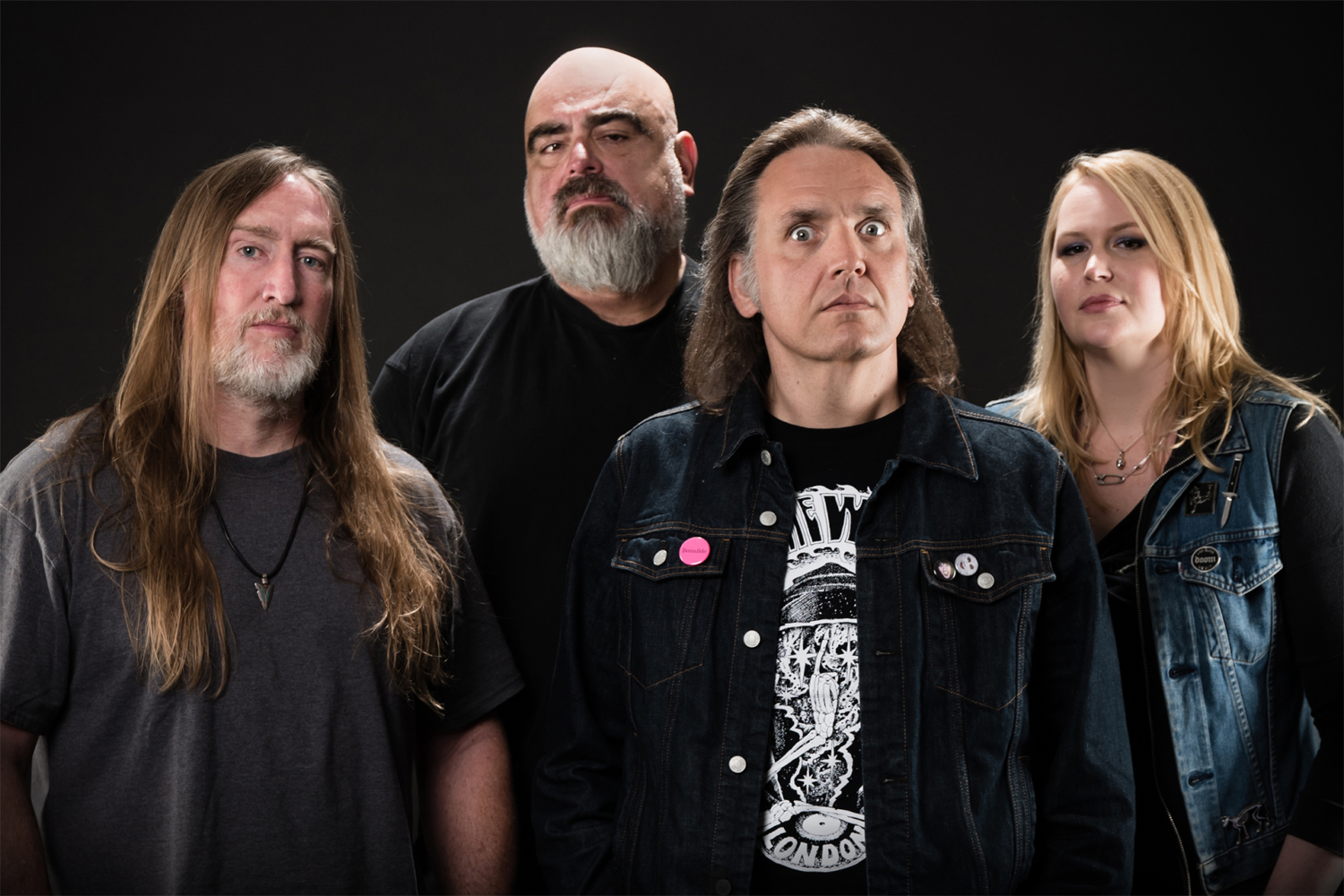
Jim wrote most of the lyrical content, but the band included your original song “Weaver’s Dawn” on the album. What’s it about?
That was pretty much about asking my friends to let me know if I’m veering off the track a little bit, using the metaphor of driving and falling asleep at the wheel. I was actually doing that a lot at the time I wrote the song. I was working out in L.A. a lot and I’d be working the graveyard shift at the studio. Driving home, I would do my best but I’d wake up hearing the rumble strips then pull off and sleep a little bit. So it’s a little of both.
That was also on your solo EP from about 10 years ago. Did it change in bringing it to the band versus recording it as your solo project?
I was just honored that they wanted to do it. I didn’t realize Jim had even heard the song. He asked me what I thought about doing it and I said I’d love it. They laid down the basic tracks when I wasn’t there and kind of surprised me with it. I thought they did a great job. That was a nice little surprise.
You mentioned you went out on the cruise with Motörhead. Were you tight with those guys?
Jim has hung out with them a bit. I had been around Lemmy a couple of times and talked to him a little bit at one of the sound checks. He was so nice. I was trying to be all respectful… I didn’t even want to step foot on his stage until he left the building. [laughs] We were getting pressured to get set up for soundcheck. I went out there and he started asking me about my gear and my Bison amp. We talked about the cruise and he said, “That was fun! We have to do it again.” And we did. I think the only bands that played both cruises were Fireball Ministry, Anthrax, and Motörhead.
It’s tough enough to cover a bass legend’s song, but then you got to know the guy. The final track on the album is Motörhead’s “I Don’t Believe A Word.” How did you tackle that one?
I approached it by erasing from my memory that I had ever heard it. I hope I did it justice. I was glad that Jim suggested doing that. He spoke with Lemmy about doing it [because] Jim thought that it was the greatest set of lyrics that Lemmy had ever written. I think Lemmy pushed it off saying, “Who would ever sing that?” [laughs] I think it was pretty special to be able to do that as a heartfelt tribute to Lemmy.
I love that the single from the album, “The Answer”, has a bass solo.
I did a whole bunch of takes for that. [Producer] Paul Fig came out to my place to record all the bass tracks because I have a mountain of gear and half of it was already hooked up for this kind of thing. You can just move a microphone over to another cabinet and use this amp… It’s a lot easier than me hauling everything out to L.A. He would have me do five or six takes of a song.
He’d say, “Let’s do another one,” and I’m thinking we’re moving onto another song. Great, I nailed it! And then I hear the same track. [laughs] So I was just getting bored and there’s just this one part where I’m hanging onto the open C for a few bars, and I started noodling around. After I finished the take he said, “That was the one!” I’m so glad that stuck. To have the single that we put out with a video and have a bass solo in the song that gets the push, that was perfect for me.
You get some awesome double stops going on in there. Is that something you love to throw in?
Oh yeah, in the Kyuss days, even. I play left handed and the strings are upside down so I can’t do all the popping and stuff. A lot of stuff I did in Kyuss was this droning on one string and playing chords on the other things. There are definitely some things that I can’t do that normal players can do, but there’s some weird stuff that I don’t even realize that I’m doing that would be hard for somebody else to play. So it all works out.
You get such a different perspective that you just naturally play different things.
It’s funny… I’m used to playing with other guitar players, obviously. So I’m used to watching what they’re playing and copying that. But when I’m trying to show something to a new guitar player that I haven’t played with before they’re just like, “What? Weird…” I don’t realize how weird I am until they give me this look like, “Holy shit.”
Your new Warwick 8-String Katana is pretty crazy. What made you get those options?
I just knew that the tone would be unbelievable and I was right. I’m going to try to work that into the set. It was tuned up to E for the recording of “Weaver’s Dawn” on the album, but I think I’m going to be able to play that song with a capo, actually. I’ve never used a capo on bass but I just bought one and it works great. I’ll be able to put a capo on one of my four-strings and then I can tune the eight-string back down to the C-sharp and loosen that up. I’m going to be working that into the set on as much stuff as I can because it’s pretty tricky muting. I’m constantly moving my thumb to whatever string next to when I’m playing. On that eight-string, if you rest it on a string, there’s still that octave string below that you’re not touching. I haven’t tried it on all the songs in the set but I know it’s going to work for some and it’s going to be tricky for others. Or maybe I’ll start using a pick on some of the stuff so I can move with my entire hand except for what I’m playing. I don’t know… It’s a whole new can of worms that I haven’t really had a chance to explore fully yet. I’ll use it on a few things.

I’m so glad that I got that bass. I just wanted something really different you know. The first custom base I got from work was a Katana. At that point, I was so respectful of what they’ve done for the past 35 years and I didn’t want to change their choice of woods. I knew that they knew what they were doing and so I didn’t do too much to that bass. Besides, the inlays and gold hardware and I put different pickups in it. For the eight-string I wanted to get something that nobody on this planet has ever had, you know? I think I succeeded.
You’ve done plenty of recording and sessions and engineering and all sorts of good stuff. What did you do to record Remember The Story?
I played in a circle of amps that’s right behind me. I know I used the Bison head on almost everything probably except for the Motörhead song. For sustain, I was going through a couple of pedals into the Hartke. That was right next to me, just blasting in my face to get more sustain. I know I used an SVT cabinet on all the Bison stuff. I have a 1970 SVT here that’s not here right now that I used on Sky Valley in the Kyuss days.
That got mixed into some of the stuff, but a lot of it was that Bison head. That’s the only one in the world of its kind. It’s got a creamy overdrive like the 80s but you can switch over to clean channels well so it’s it’s pretty versatile. There’s a blend control on the back that goes from Vintage to modern. I just leave that in the middle and I don’t know if there’s a solid-state circuitry in there but when I use all this SVT the overdrive is incredible. But when I’m hitting chords, it just kind of mushes. It sounds right but it kind of washes out with that head. You hear the clarity you can hear all the notes but you’re still getting that overdrive.
I’ve actually had a few people e-mailing me tracks to re-amp through the Bison head and sometimes the Sky Valley SVT. That’s becoming kind of a theme for me which I’m happy to do. I’ve been having bass players that are working on an album send me tracks to run through that. That Sky Valley SVT has been on some cool stuff. I took that out to do the Sound City track with Dave Grohl and they had an SVT sitting there. They said you’re welcome to use this and I said no. I plugged mine in and Butch Vig was just like, “Yes!”
You know there’s something about that head. And you know it’s got a little bit of history. So I hope that becomes like a niche thing when I’m not too busy. Just keeping up on re-amping tracks for people. It’s fun. I actually re-amped myself on a track that I recorded in 1986. My old band Across the River with Mario Lalli and Alfredo Hernandez who’s been in Kyuss and Queens of the Stone Age. There was this live recording done. We played this big generator party with a bunch of SST bands like Saccharine Trust played and Firehose.
Anyway, it was all recorded on eight-track. The guy that recorded it, Phil Newman, had these tapes for all this time and a lot of it was never released. We eventually got the tapes so we transferred it into Pro Tools. There was part of the amp track for the bass that was missing, but there was a DI track. On an eight-track reel to reel they had two tracks for bass which, was so lucky for me. I got to take that DI track and I re-amped it through the SVT that I used that day and through the cabinet that I used that day. I even still had the pencil markings on the head from those days. To stand in front of my cabinet and hear my 21-year-old self-blasting out of this amp was such a trip. I sounded horrible. [laughs] There were clunkers all over the place. It was weird, though. It was like seeing a ghost or something. It was like a time machine.
Are you a pedal guy or do you like your overdrive from the amps?
I have never been a pedal guy until this week. On that old Sky Valley SVT, my tone came from turning all the tone knobs all the way up. That was my overdrive. It was easy to remember on stage I couldn’t see very well and I could just feel it. I’d just crank it with the bass, the mid, and the treble all the way up. And the volume was probably only turned up to three. You get past that and it completely craps out. But that just gets that creamy overdrive. Everybody always asked me what with pedal do you use for that sound, but it’s just straight into a tube amp.
I’ve been experimenting with different amps. I’ve got a Mesa Boogie Bass Strategy and I’ve been loving the sound of that it’s got a lot of tubes that I think it has to kill to get it. Right now I’m trying to blow up a Darkglass head they sent me a few days ago. They sent out a few pedals that I think I’m actually going to use on some upcoming shows. I’ve never used pedals but I’ve got a bunch of Darkglass stuff now and some Pigtronix stuff. On some of these projects where I’m re-amping stuff, I’ll just put a bunch pedals together and try to get some weird tone that cuts through.
I’m putting together a whole pedal board for this run. I’ve got my two Pigtronix pedals: the Disnortion and the Envelope Phaser. The Darkglass stuff is the Super Symmetry compressor and the Alpha Omega, and then there’s some circuitry built into that head. It’s a 900-watt head and it’s tiny. I can’t believe how small the thing is. I’ve been trying to blow it up because I have a thing about blowing up amps and I just want to make sure that I can crank that thing up on these shows and not worry about it. I’ve failed so far to blow it up.
I know you have a few dates coming up, but are you all planning any touring behind the album?
We’re going out with Red Fang for a few shows, and I just found out that there’s an East Coast leg in the works that’s coming up pretty soon. There are a few things that are falling into place on the horizon. It seems as each week goes by there’s more stuff coming into view.


